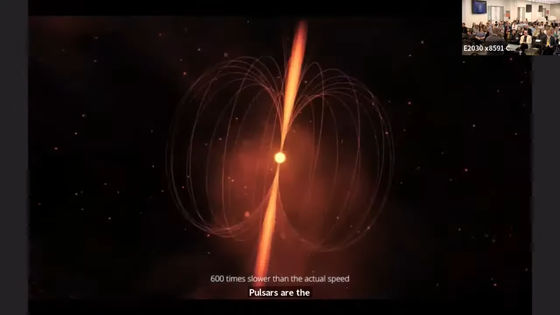What is the 'Pulsar Timing Array' that grabbed the evidence of background gravitational waves produced by supermassive black holes?

On June 30, 2023, the North American Nanohertz Observatory for Gravitational Waves (NANOGrav), a consortium of astronomers that detect gravitational waves, announced that it had identified data suggesting the existence of background gravitational waves. . The `` Pulsar Timing Array (PTA)'' is a research project and facility being conducted at radio telescopes around the world that grabbed the traces of this background gravitational wave.
International Pulsar Timing Array
The following article explains what NANOGrav announced this time.
Detecting evidence of ``background gravitational waves'' that may be traces of the origin of the universe, or ``making an important announcement'' on June 30, 2023, a research organization statement-GIGAZINE

The presentation held at 2:00 am on June 30, 2023 in Japan time can be seen in the following movie.
NANOGrav-15 Years of Gravitational Wave Research-YouTube
Albert Einstein 's general theory of relativity argued that the distortion of space-time propagates in the form of gravitational waves. Gravitational waves themselves were detected and proven to exist in 2016 by the American Laser Observatory LIGO .
Finally succeeded in observing gravitational waves, the possibility of greatly expanding space research by complementing space observation by light - GIGAZINE

According to the general theory of relativity, when supermassive black holes with billions of times the mass of the sun approach each other, they circulate and attract each other, creating distortions in space-time. It is transmitted by. Of course, there are many supermassive black holes in the universe, and gravitational waves generated from each combine to create background gravitational waves that shake the entire universe.

NONGrev says, ``Gravitational waves of various wavelengths born from binary black holes around the universe combine to create a symphony.We call it the background (gravitational waves).'' says.
NANOGrav is a consortium of astronomers and astrophysicists founded to solve the mysteries of the universe. One of the research objectives of NANOGrav is the investigation of background gravitational waves. However, the wavelength of these background gravitational waves is several light years (one light year is about 9.5 trillion km) and is extremely weak . It was very difficult to detect weak gravitational waves at frequencies as low as 9 Hz.
So the PTA is a project and facility devised to detect this very low frequency background gravitational wave. A pulsar captured by PTA is a dense remnant of a star that has reached the end of its life and caused a supernova explosion. .

PTA is a project to monitor periodic electromagnetic waves emitted by this pulsar with a huge radio telescope.

PTAs are taking place at radio telescopes around the world, and NANOGrav is emitted from a pulsar using

NANOGrav has observed a total of 68 pulsars over the past 15 years, and as a result of many years of verification by removing interference and noise from other celestial bodies, it is far more ultra-low frequency and far more gravitational waves than previous gravitational waves. It is said that 'strong evidence' was obtained to suggest the existence of background gravitational waves with an extremely long period.

Furthermore, this time, at the same time as NANOGrav, CPTA, EPTA, and InPTA independently reported that data indicating the existence of background gravitational waves was found from pulsar observation data, and NANOGrev said that those data also support the claim. .
However, the statistical certainty that the data discovered this time actually indicates background gravitational waves is about 3σ. In the world of physics, 5σ must be exceeded in order to claim that ``we found background gravitational waves'', and NANOGrev only claims that ``we have obtained evidence suggesting the existence of background gravitational waves.'' .
Nevertheless, the fact that we have come close to proving the existence of background gravitational waves, which has been considered impossible until now, is of great scientific significance. It is highly likely that the background gravitational waves whose traces were detected this time were generated from binary supermassive black holes. It may also contain primordial gravitational waves generated by the accelerated expansion of space-time. In addition to LIGO's detection of gravitational waves, if PTA can actually detect gravitational waves, we may be able to approach the secret of the creation of the universe.
A research team at Kumamoto University is also participating in InPTA and has announced the following press release.
Evidence of the Arrival of Nanohertz Gravitational Waves - Challenging the Mystery of Supermassive Black Holes - | Kumamoto University
https://www.kumamoto-u.ac.jp/whatsnew/sizen/20230629
Related Posts:





